English to Spanish translation: Instant,
brand-Aware and
AI-powered
Get your content translated into Spanish with AI that learns your brand voice and terminology. From software interfaces to marketing campaigns, Transifex handles all your English-to-Spanish translation needs while maintaining consistency across all Spanish-speaking markets.
Book your 30-min demo

Book your 30-min demo

Access 580+ million Spanish speakers with professional translation quality
Spanish ranks as the world's second most spoken language and drives significant business growth across multiple continents. Whether you're targeting Mexico's thriving economy, Spain's European markets, or the 62 million Spanish speakers in the United States, quality English-to-Spanish localization directly impacts your revenue and customer satisfaction.
Getting English-to-Spanish translation right is trickier than it looks
Converting English content to Spanish involves more than word substitution. You need to navigate complex grammar rules, regional differences, and cultural contexts that can make or break your message in Spanish-speaking markets.
Here's what makes it challenging:
Grammar complexity
Spanish nouns have masculine and feminine genders that affect all related words, and the language includes more than 14 verb tenses, including the subjunctive for emotions and hypotheticals. The choice between formal "usted" and informal "tú" also changes entire sentence structures.
Regional differences
Word choice varies across regions, such as "computadora" in Latin America versus "ordenador" in Spain. Mexican Spanish accepts more English loanwords, while Argentina uses "vos" instead of "tú," requiring different verb conjugations. These variations influence both vocabulary and tone.
Translation traps
False cognates are common, such as "éxito" meaning success rather than exit, and context is crucial since "banco" can mean a financial bank or a bench. Technical terms also shift meaning between regions, making accuracy especially challenging.
Cultural adaptation
Latin American markets favor relationship-driven messaging, while Spanish business culture values respect and formality. Direct, sales-oriented language that works in English often sounds too aggressive in Spanish, requiring a more careful, culturally sensitive approach.

Transifex is loved by leading organizations worldwide
How transifex solves English to Spanish translation at scale
Whether you manage localization projects, develop software, or run marketing campaigns, Transifex streamlines your English-to-Spanish translation workflow without compromising quality or consistency.
Here's what makes the difference:
Smart AI that knows your brand
Transifex AI uses your existing glossary and style guides to maintain consistent terminology. It references your translation memory for context, so "user account" gets translated the same way across all your content. The system adapts to your industry—formal tone for legal documents, conversational style for social media.
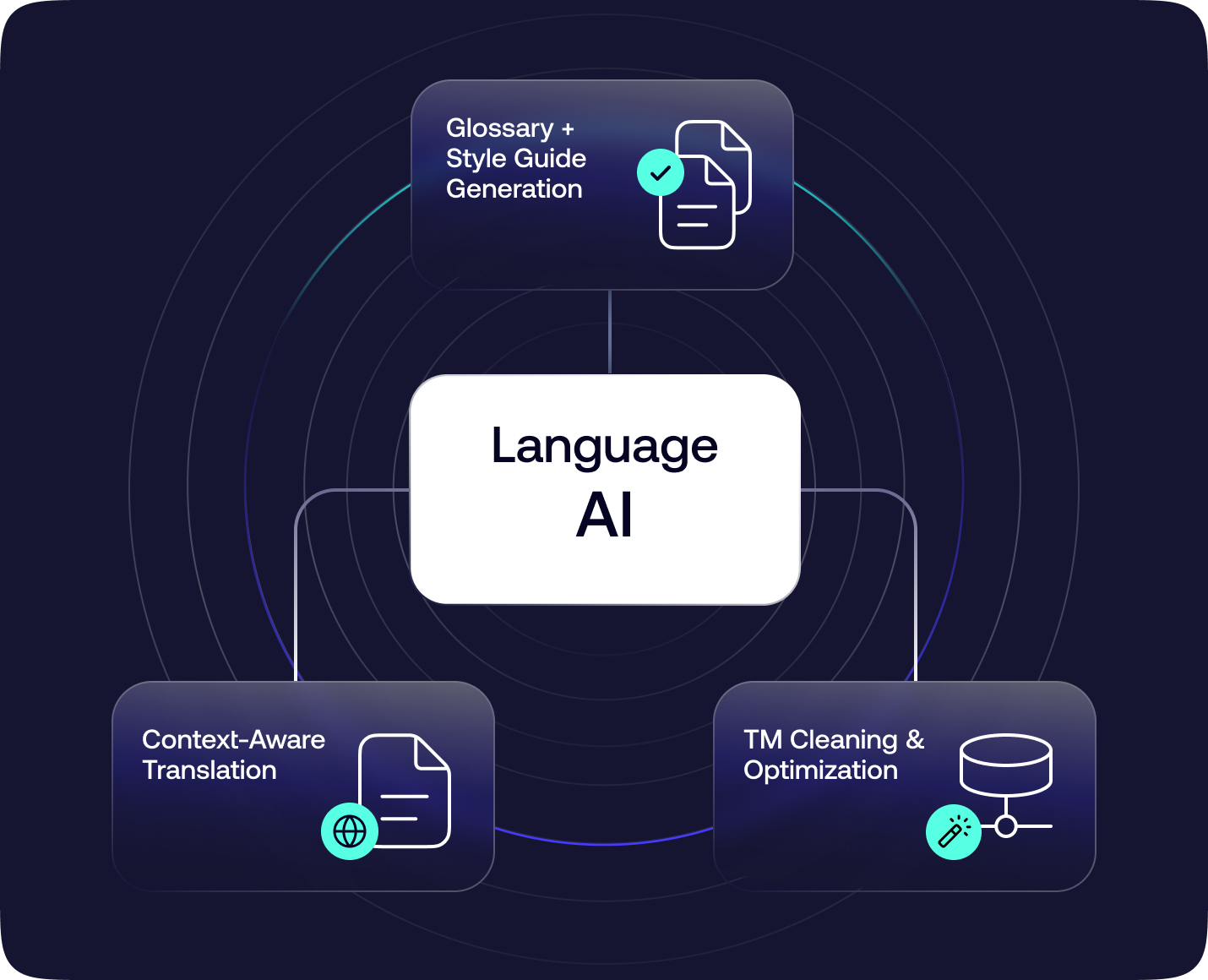
Translation memory that actually works
Every approved translation builds your company's Spanish terminology database. When you translate "customer support" once, the system suggests it automatically for future content. Fuzzy matching finds similar phrases like "customer service" to speed up translations while keeping consistency across Mexican, Argentinian, or European Spanish variants.
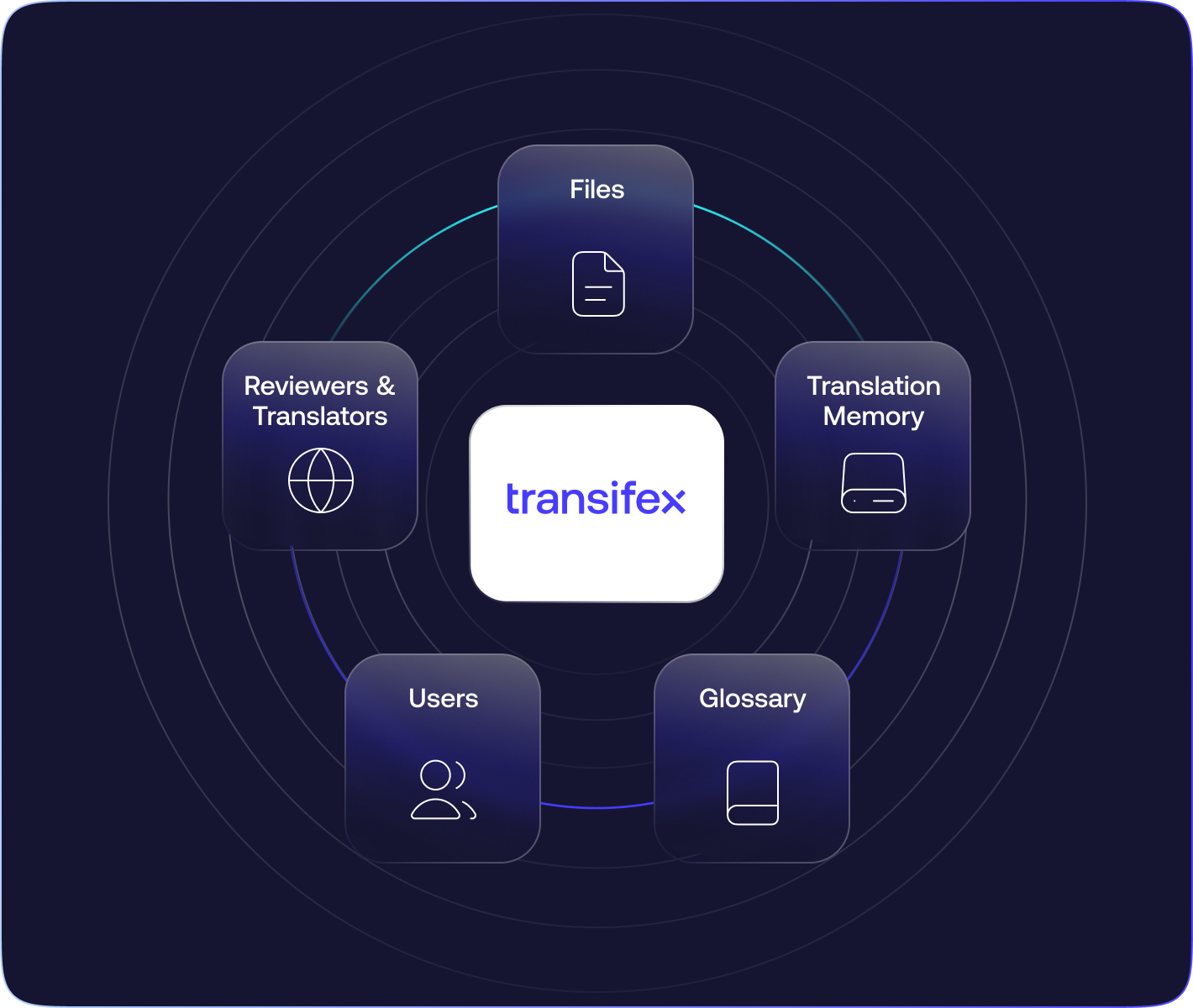
Quality scores you can trust
TQI automatically evaluates every Spanish translation using three metrics: consistency across language models, structural integrity (preserving HTML tags and variables), and semantic accuracy. Set thresholds to auto-approve high-quality translations (85%+) while flagging questionable content for human review.
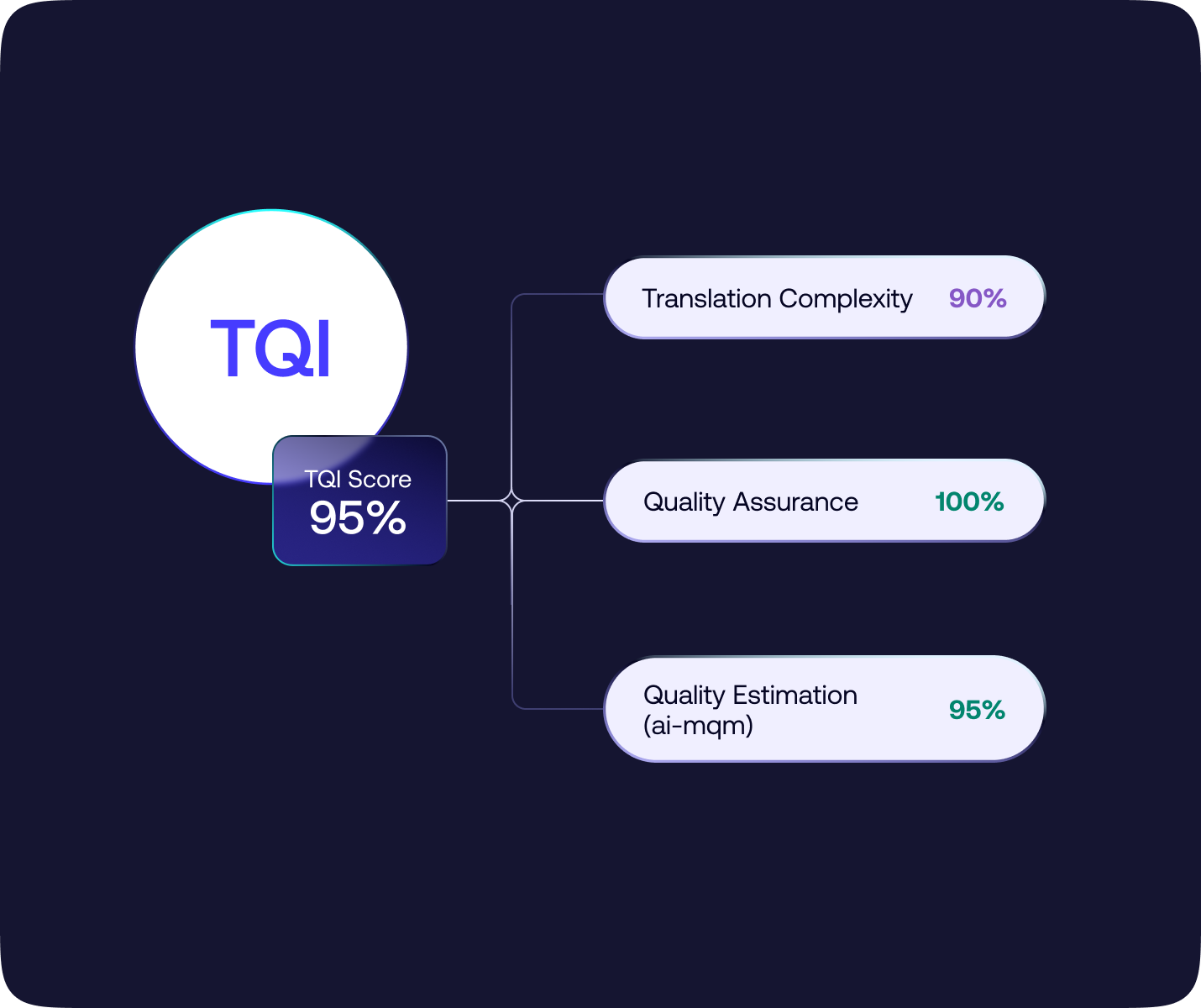
Live website translation
Install one JavaScript snippet and translate your website directly in the browser. See exactly how Spanish text looks in buttons, menus, and content areas. Changes go live immediately without developer involvement—perfect for marketing campaigns targeting Hispanic markets.
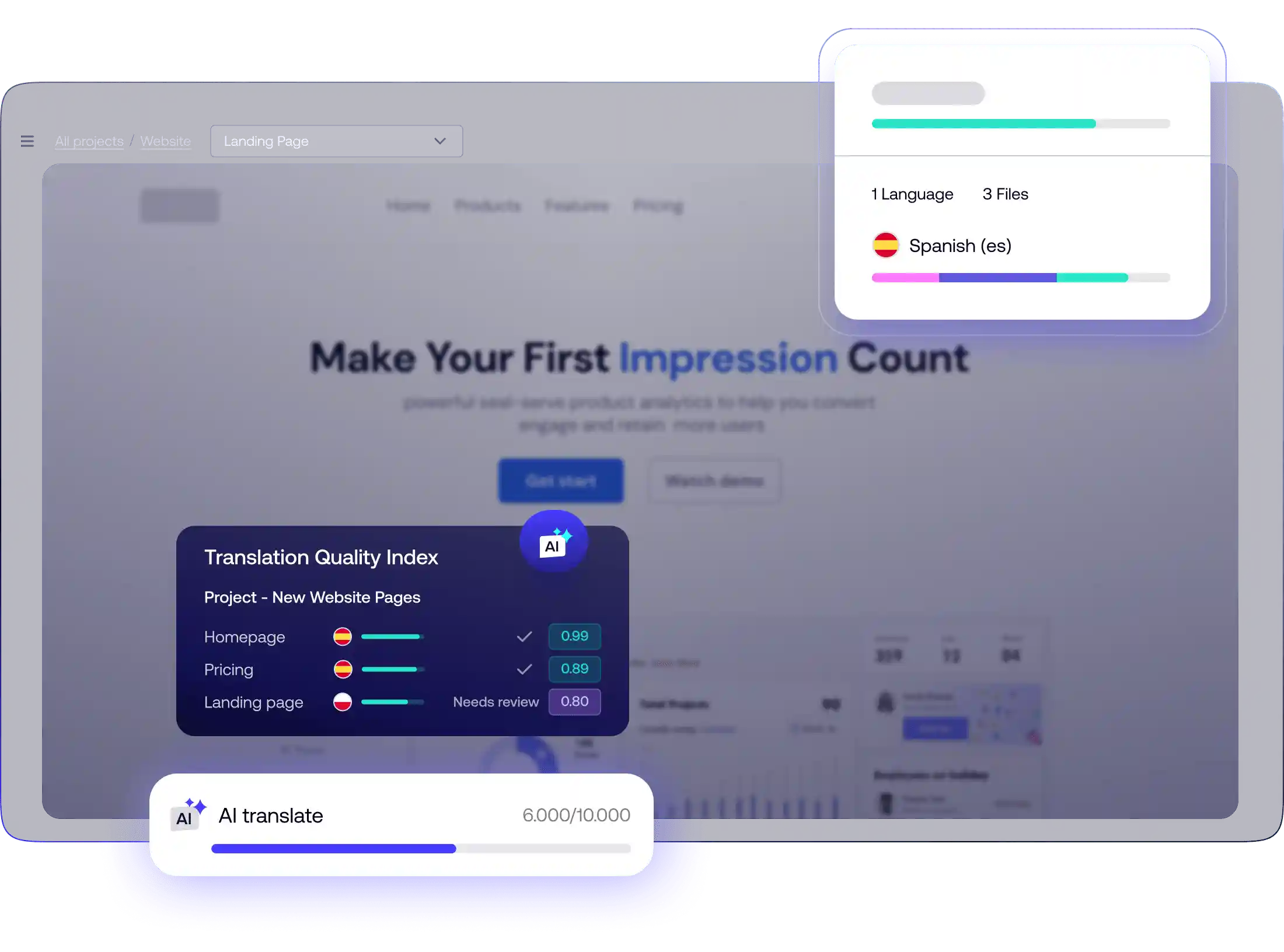




Spanish AI that understands regional differences
Transifex supports over 450 language locales following ISO 639-1 standards, including distinct Spanish variants like es_MX (Mexico), es_AR (Argentina), es_ES (Spain), and es_419 (Latin America). The AI recognizes when to use "computadora" vs "ordenador" for computer, or "carro" vs "coche" for car, depending on your target market.
Transifex features designed for Spanish localization excellence:
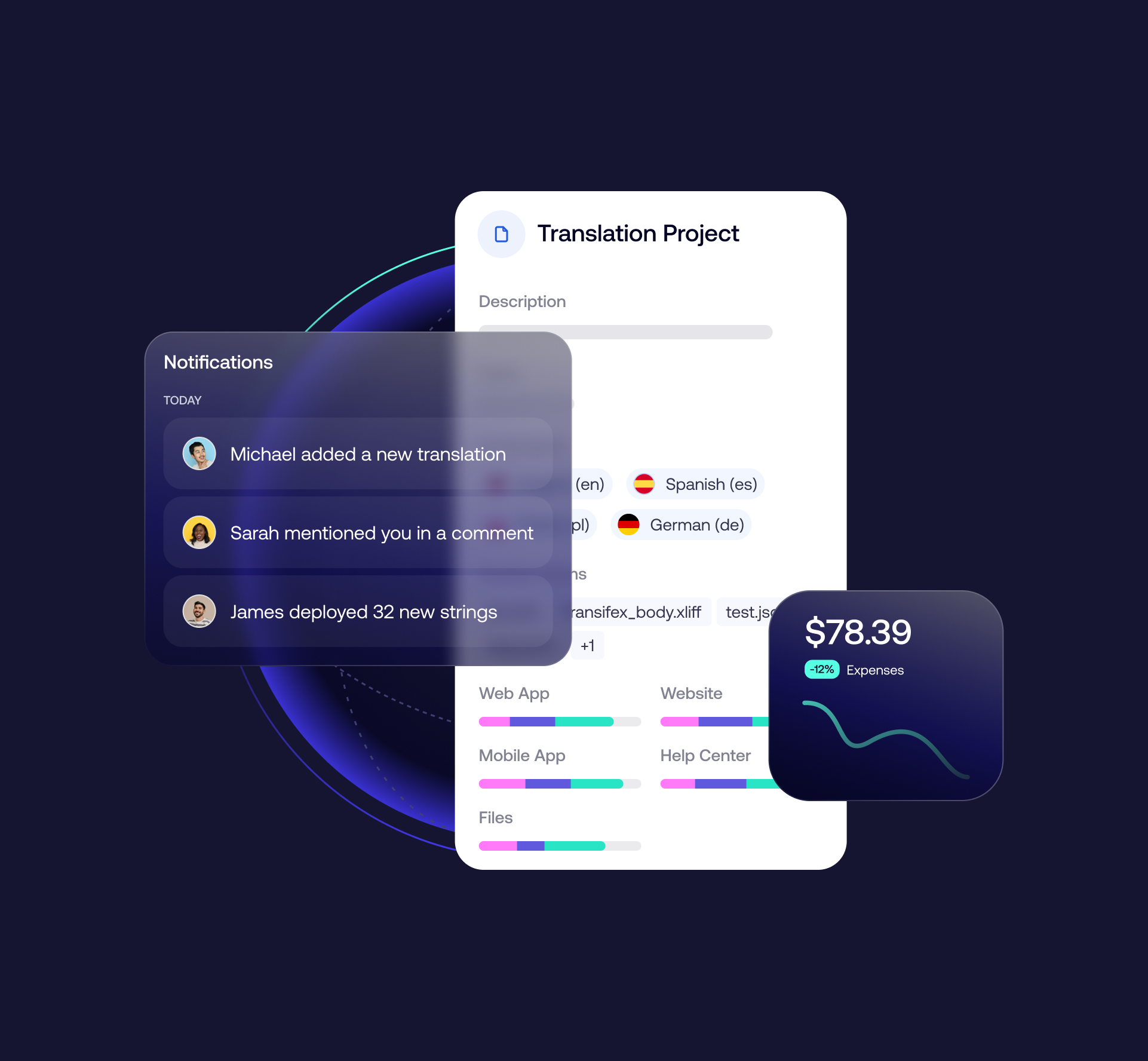
Complete project management
Set up automated workflows for Spanish translation projects. Configure TM fill-up to instantly apply 100% matches from your translation memory. Enable AI fill-up to translate new content automatically. Assign roles to Spanish translators, reviewers, and project managers with appropriate permissions for different markets.
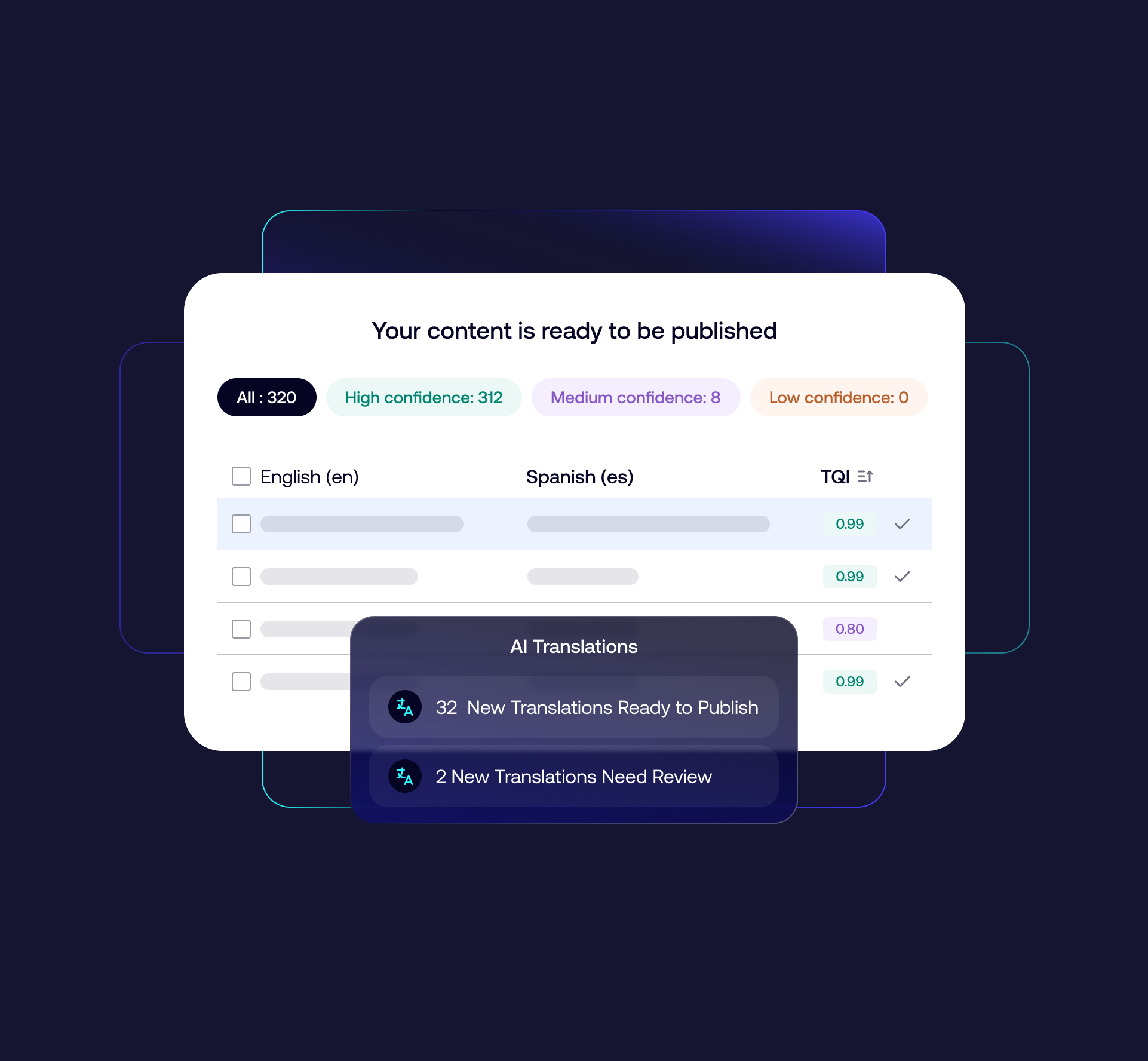
Context-aware AI translation
The system analyzes your glossary for consistent terminology, references high-similarity translation memory entries, and follows your style guide instructions. Whether you need formal European Spanish for business documents or conversational Latin American Spanish for social media, the AI adapts accordingly.
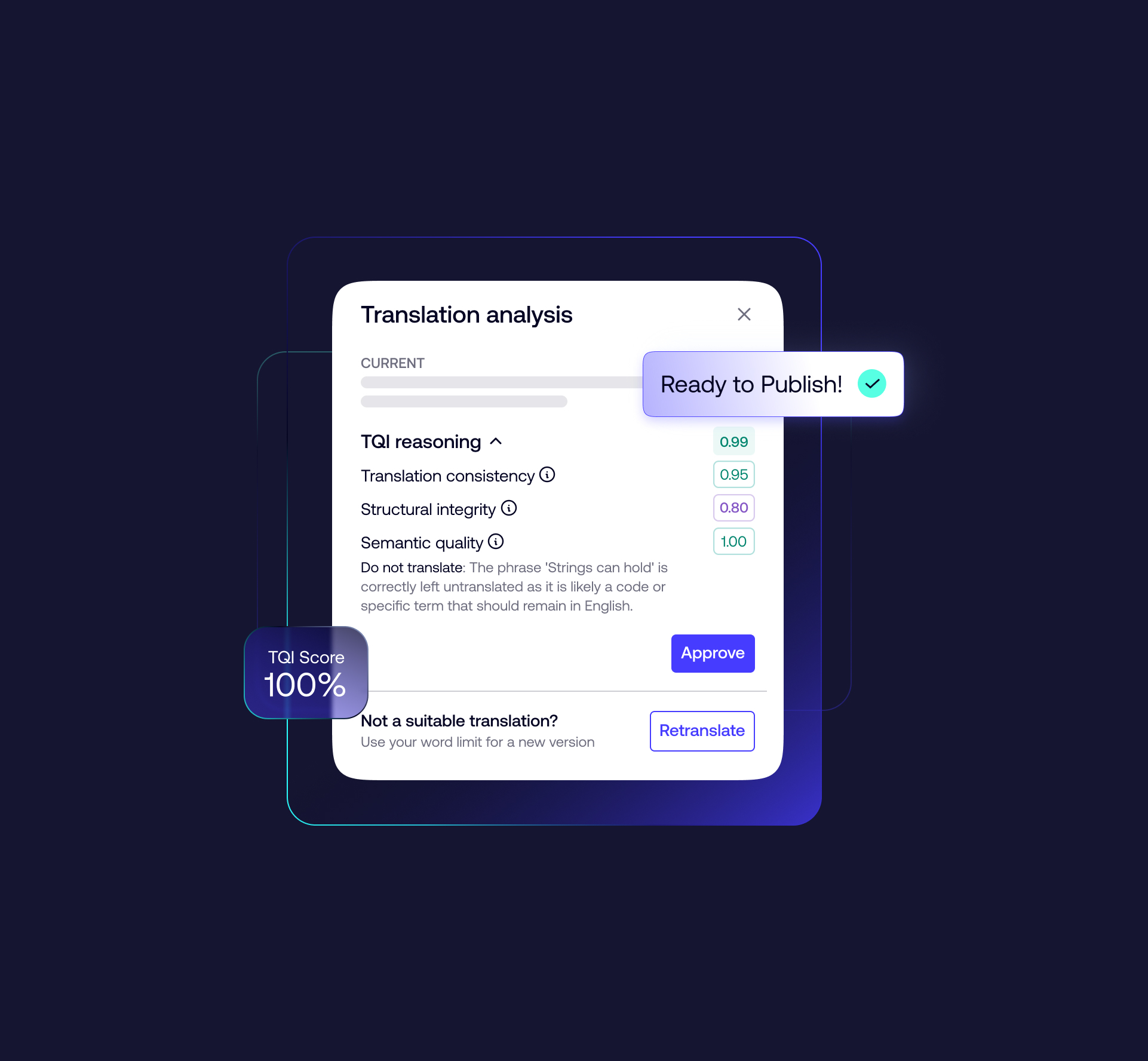
Automated quality control
TQI identifies specific issues like terminology inconsistencies or cultural appropriateness concerns. Configure workflows to auto-approve high-scoring translations (85%+), route medium-scoring content for quick review, and flag low-scoring translations for comprehensive revision. Track quality trends to improve future Spanish translations.
Built for product, marketing, and localization teams alike
Localization Managers
More efficiency, more localized content
Localize more Spanish content with less effort on an all-in-one platform. Bring all stakeholders together, streamline collaboration, and deliver authentic, on-brand Spanish translations efficiently for every market.
Marketing Managers
Launch global campaigns faster
Create localized Spanish content that matches your brand voice across every market. With context-aware translations, marketing teams can move fast, stay consistent, and never miss a campaign window — no dev help required.
Developers
Localization built for agile teams
Take Spanish localization off your backlog with a platform built for high-frequency content updates. Seamlessly integrate into your CI/CD workflow using our extensive API, SDKs, and CLI tools.
Product Teams
Launch multilingual products faster
Accelerate product launches with automated Spanish localization. Integrate seamlessly into your development workflow and ensure your applications speak every user's language from day one.
The only localization platform with native support for over 46 different content types
Translate any type of English content into Spanish — no conversions or plugins needed.
Web and
mobile UI
YAML (.yaml/.yml), JSON (including structured JSON), Gettext PO/POT, Android XML, Apple .strings / .stringsdict
Technical documentation
Markdown (.md / .mdx), Wiki markup (.wiki), XLIFF (.xliff/.xlf/.xml)
Marketing
assets
PowerPoint (.pptx), HTML / XHTML, Landing pages
Fileless (API-based content)
Phrase-based localization from APIs, Figma plugin, HubSpot —uses ICU syntax, supports metadata, and exports as JSON or XLIFF
Business and legal documents
Microsoft Word (.docx), Excel (.xlsx/.xlsm/.xltx/.xltm), PDF (via conversion)
Subtitles and video captions
SubRip (.srt), SubViewer (.sub), YouTube captions (.sbv), WebVTT (.vtt) —translated in-context with built-in editor preview

Scale Spanish localization — without the headaches
Transifex helps you translate English to Spanish with speed, precision, and automation — all while maintaining brand consistency and cutting manual work.
Launch new content, reach Spanish-speaking markets, and scale your multilingual strategy with confidence.
Frequently asked English to Spanish questions
Still got questions? Talk with the Transifex team to see how you can improve the quality of your Spanish translations and save money.
What is the total number of countries that speak Spanish?
Spanish is an official language in 21 countries and is spoken as a native language by over 500 million people worldwide. This makes Spanish one of the most geographically widespread languages, with significant populations across Latin America, Spain, and the United States.
How many people speak Spanish globally?
According to Instituto Cervantes, approximately 580 million people speak Spanish worldwide as of 2024. This includes native speakers and those who speak Spanish as a second language, making it the second most spoken language globally after Mandarin Chinese.
What percentage of online content requires English-to-Spanish translation?
Spanish is the third most used language online, representing about 7.9% of all web content. With the growing Hispanic market in the US and expanding Latin American economies, demand for professional English to Spanish translation services continues to increase, especially for business, e-commerce, and digital marketing content.
Why translate English to Spanish for e-commerce and websites?
Studies show that 76% of online users prefer to purchase in their native language, and 65% of Spanish speakers trust brands more when content is available in Spanish. For businesses targeting Hispanic markets, Spanish website translation can increase conversion rates by up to 7 times compared to English-only content.
Is Spanish a top priority language for translation services?
Yes, Spanish consistently ranks as one of the top 3 most requested languages for professional translation services. The combination of economic growth in Latin America, the large Hispanic population in the US, and Spain's position in European markets makes Spanish localization essential for global business expansion.
What's the difference between Latin American and European Spanish?
While mutually intelligible, Latin American Spanish and European Spanish differ in vocabulary, pronunciation, and formality levels. For example, "computer" is "computadora" in Latin America but "ordenador" in Spain. Professional localization considers these regional differences to ensure your message resonates with your specific target audience.
How many regions support both Latin American and European Spanish variants?
Transifex supports multiple Spanish locale variants following ISO 639-1 and BCP 47 standards, including es_ES (Spain), es_MX (Mexico), es_AR (Argentina), es_419 (Latin America), and many others. This allows businesses to target specific regions or use neutral Spanish for broader audiences across Spanish-speaking markets.
Learn more about scaling your software localization efforts
Software localization is more than the translation of your product UI. Different language settings, plural forms, frameworks used and visual relevancy factors are only a few other things to consider.




